Life at Scalingo #1: From Office to Hybrid Remote
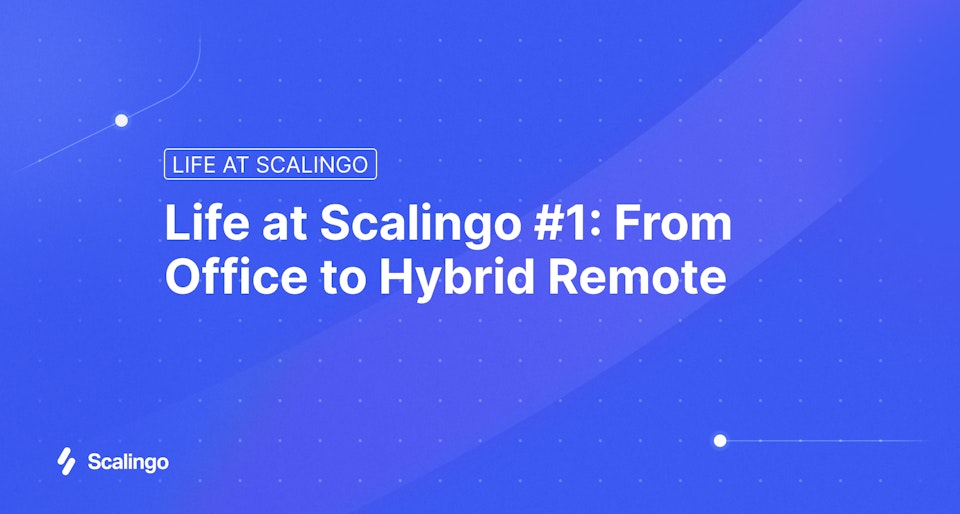
While remote work became widespread during the pandemic, many companies today are opting to return to a more traditional, office-based model.
At Scalingo, however, we viewed this shift as an opportunity for lasting change. We’re now proudly “remote-first,” offering a hybrid work option for those who prefer it.
This shift has been positive, but it hasn’t been without its challenges; transitioning from an office setup to a fully remote organization with employees spread across France required a major rethinking of our approach.
Here, we’ll share our experience and insights on organizing a remote team.
Let’s dive in!
A Bit of Background
At Scalingo, we provide cloud hosting solutions as a PaaS, a naturally digital-focused field that lends itself well to remote work. But the transition to remote wasn’t instantaneous—if anything, the pandemic accelerated what was bound to be a necessary shift.
Back in 2019, Scalingo was a small team all based in a single office in Strasbourg, where conversations happened face-to-face. We were already open to occasional remote work for individual needs and had carefully selected tools to ensure productivity from any coworking space or while traveling.

In mid-2019, we hired our first fully remote employee, based in Paris, who would occasionally come into the Strasbourg office. This experience prompted us to strengthen our remote practices.
Then, 2020 arrived, bringing new challenges.
Adapting to Full Remote During the Pandemic
When lockdown hit, we were able to rely on these early remote experiences to quickly transition to full remote work. With the tools and practices already in place, we managed to stay highly productive from day one—a necessity as we took on new projects like hosting the site jeveuxaider.gouv.fr.
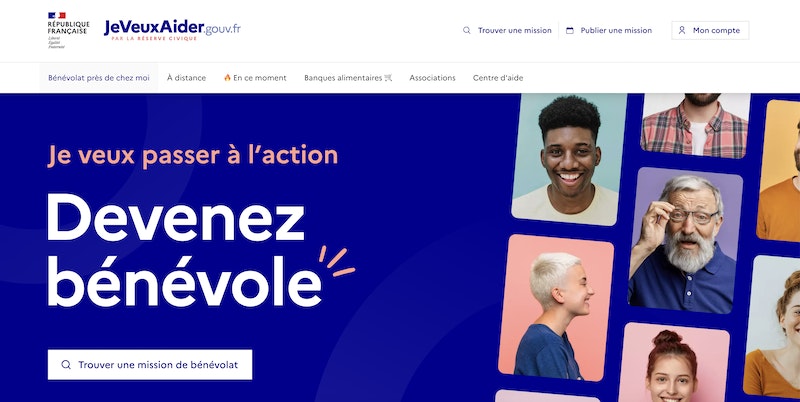
During this period, our team continued to grow, doubling in size in record time. All new hires were fully, or almost entirely, onboarded remotely, helping to establish a remote-first culture.
Scalingo’s Remote Work Setup Today
Today, we have about 30 employees distributed across France, fully embracing a “remote-first” culture. Since August 2021, Scalingo has formalized a hybrid remote model, aiming to get the best of both worlds.
In practical terms, this means our policy remains focused on remote work, but everyone is free to choose where they work best—at home or in the office. We believe both options are viable long-term, and that individuals should be able to work according to their preferences.
To provide a satisfying work environment, whether in full remote or hybrid mode, we’ve implemented the following measures:
Inclusive work organization: We ensure that work processes fully integrate remote employees without creating imbalances.
Coworking expense coverage: For our fully remote employees, we cover coworking costs to provide a suitable work environment.
Onboarding in Strasbourg: New hires are invited to Strasbourg for a 1-2 week in-person onboarding to help them integrate well.
Monthly team meetings: We encourage team members to meet at least once a month, ideally in Strasbourg for those who can.
Offsites & Team Gatherings: Offsites are special times to build team cohesion and reconnect face-to-face. We aim to maintain this dynamic with regular events.
Social Budget: Each manager has a quarterly budget of €30 per person for organizing team activities. The goal is to reduce the "distance barrier" and strengthen team bonds outside of the work context.
These initiatives help maintain a strong team spirit, providing a balance between flexibility and social connection.
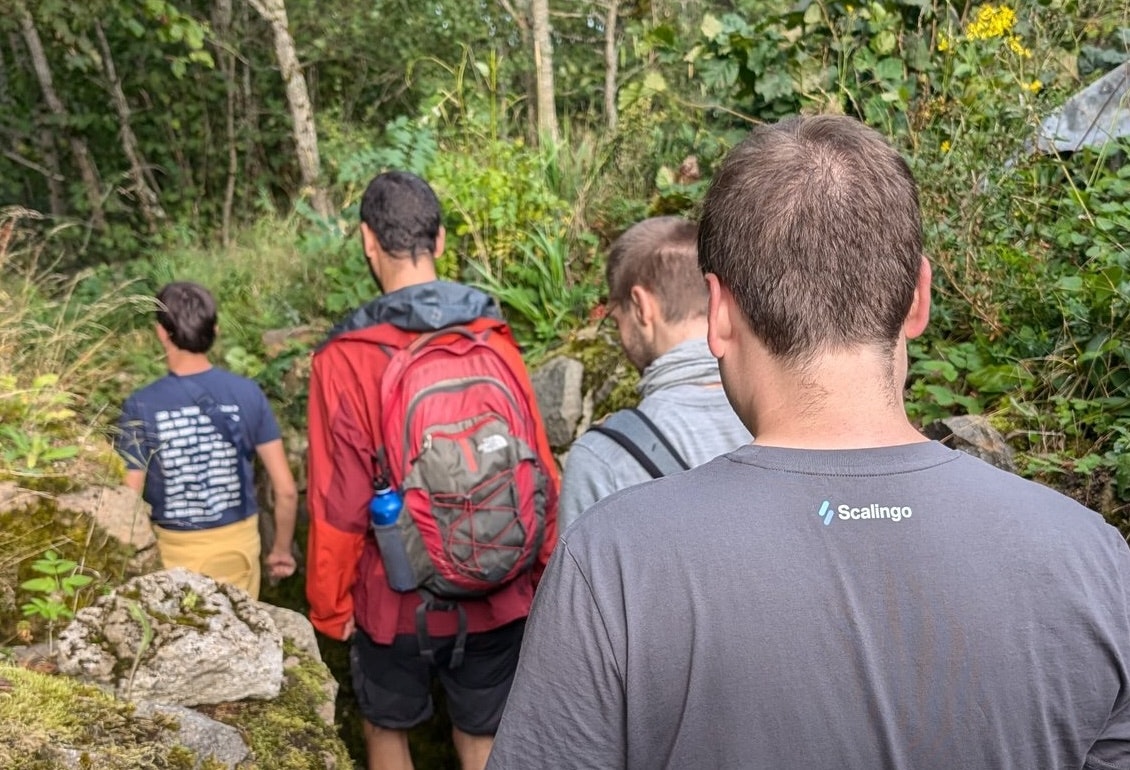
Our Remote Work Rituals
As our team has grown, staying synchronized has become more challenging, given the volume of information shared daily. To address this, we introduced new rituals to help everyone stay in sync and avoid the confusion that can sometimes arise in remote communication.
One such ritual is the All Hands Meeting (sometimes called a Town Hall in other companies), held quarterly to review what happened in the past quarter and the vision for the next.
We also recently implemented additional meetings to help team members understand each other’s roles better and ask questions freely.
Tech Office Hours: Held every two weeks, these sessions let employees ask questions about the product or ecosystem. It’s a dedicated time for the technical team to answer questions, making it easier for non-technical newcomers to better understand the platform.
Scalingo Meetups: These meetups allow team members to showcase lesser-known parts of their work or give tutorials on tools they use.
We also hold classic meetings, like weekly One-on-Ones (O3s) between team members and their managers, and each team has its own set of recurring rituals and meetings based on their needs.
Finally, our eagerly awaited annual Offsites, the most recent held in September 2024, allow the team to connect in person and work on various topics in workshops, as well as enjoy outdoor activities together.
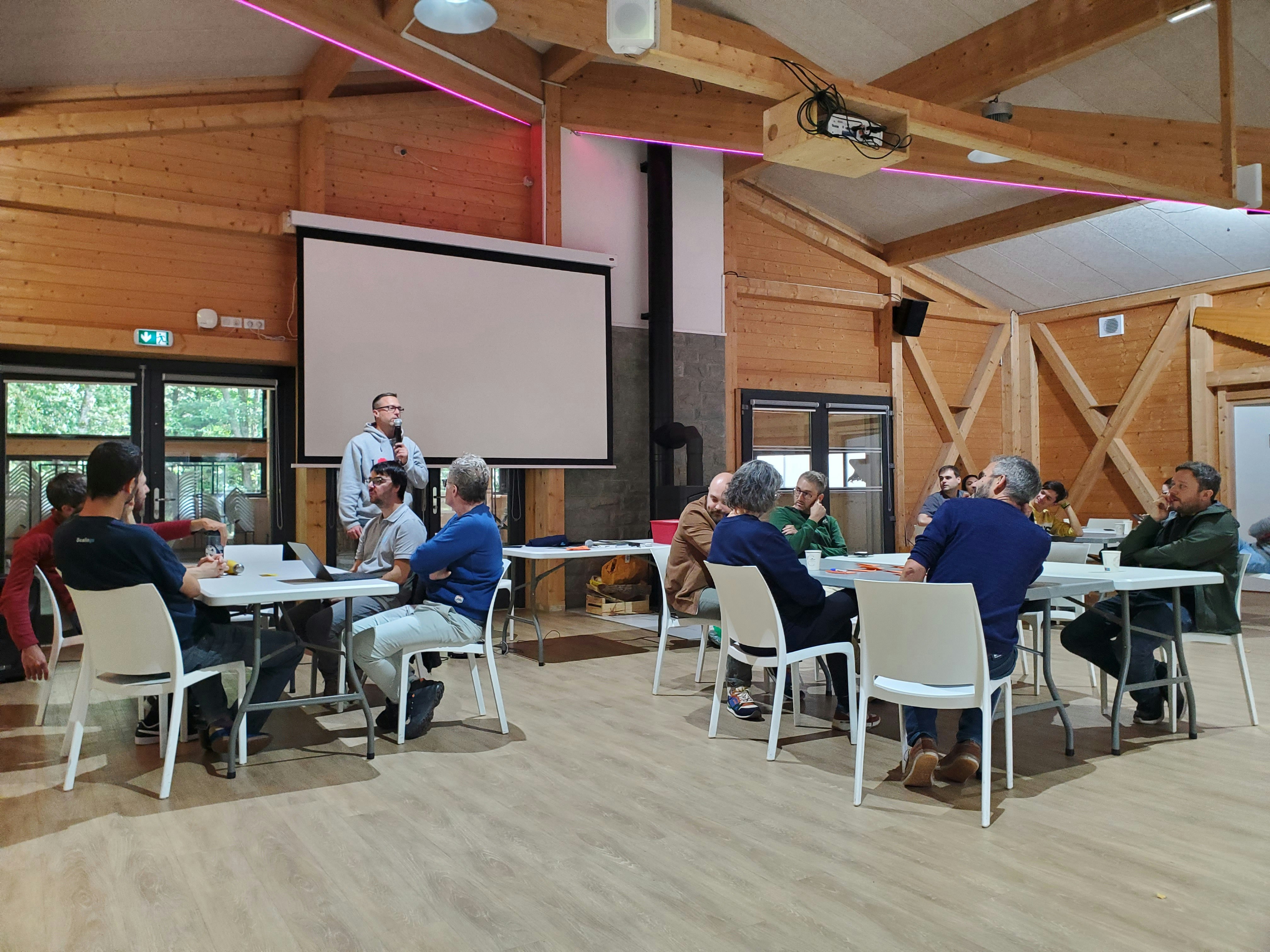
Communication at Scalingo
Remote work requires a higher standard of communication. Inspired by Lise Quesnel’s pyramid of communication, here’s our own hierarchy of communication methods.
We consider everything to start with a Slack message (the base of the pyramid) and escalate if needed. This means we prioritize written Slack messages for most information. We find it a perfect channel for sharing information efficiently and asynchronously.
However, some situations require more than just written chat, as text can sometimes cause misunderstandings. To address this, the next level up in the pyramid is a Slack call. Voice chat provides an easier way to understand one another and avoids potential confusion from text.
At the top of the pyramid is face-to-face communication, when possible. It’s the best way to avoid misunderstandings, though for most of our team, it’s not an option every day. To replace this, we can do a video call with cameras on (on Slack). Video adds an additional layer to communication by providing visual cues, which help make the call more natural, especially with the benefit of body language.
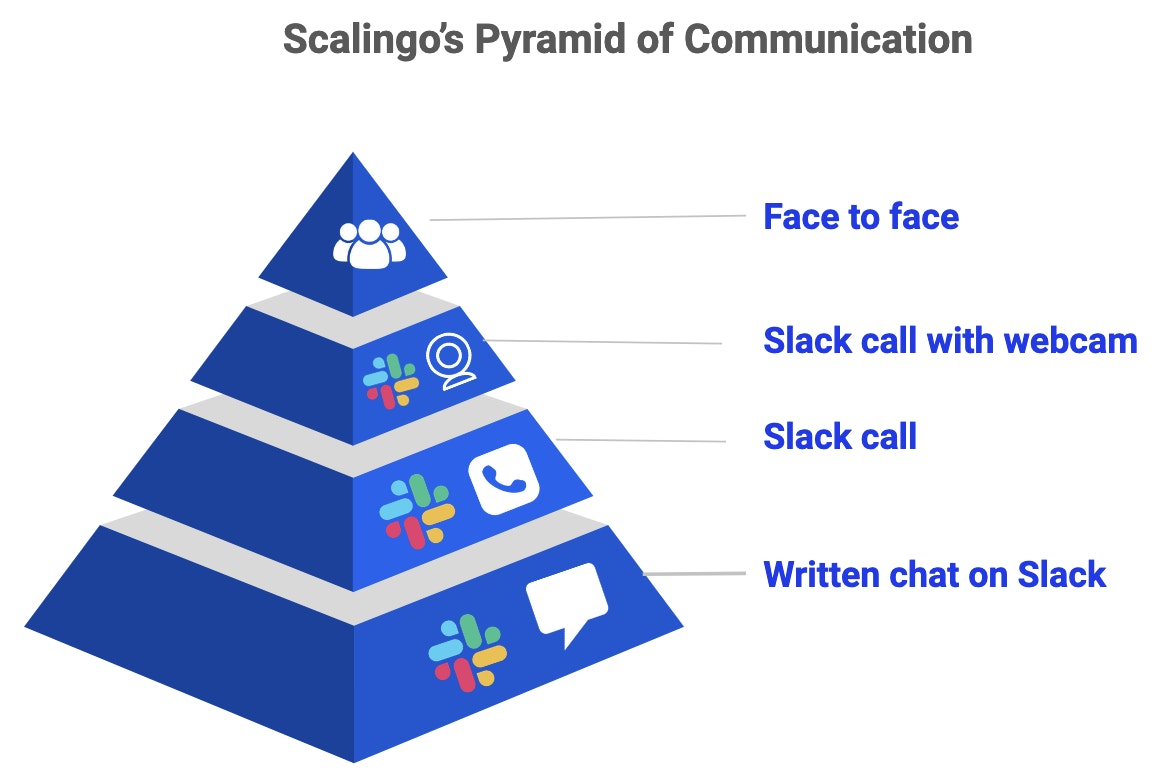
Employee Experiences at Scalingo
Who better to talk about remote work than the Scalingo team themselves? We interviewed them to get their honest impressions on what they enjoy about working remotely and what challenges they face.
Today, things have changed compared to the early days of remote work at Scalingo: many new hires joined knowing that their work would be fully remote and were prepared for this setup. For many, it wasn’t their first remote experience, which influences their perspective.
With this in mind, although remote work isn’t suited to every type of employee or company, it’s widely appreciated at Scalingo.
The employees who responded to our survey rated their satisfaction with remote work between 8 and 10 out of 10.
They particularly value the ability to adjust their work to their lifestyle, the lack of a commute, flexible hours, and the freedom to work from designated coworking spaces or even different rooms at home for a change of scenery. Others highlight the benefits of remote work on concentration, as interruptions are minimal and usually written on Slack, as mentioned earlier. Our written communication culture was also described as helping “foster knowledge sharing.”
Of course, remote work isn’t without its challenges; the main drawback remains the risk of isolation. While not everyone feels this way, some employees mention that it’s “more challenging to get to know all colleagues,” especially those from different teams, or that they feel a “lack of social interaction.” As described, Scalingo strives to maintain rituals that prevent remote work from feeling too isolated, though this remains its primary limitation. Some employees have personal strategies to counter this, with the most popular being coworking spaces.
But despite these few downsides, our survey shows that employees see more benefits than disadvantages in remote work. Most wouldn’t opt to return to office-based work, with some specifically choosing a fully remote position.
Others would prefer a hybrid option to “see colleagues” and “discuss topics that are easier to handle in person.” This option is available at Scalingo, where team members who wish to work from the office can do so, though location can limit this. For now, none of our employees would choose to return to a fully in-office setup.
Image Sources : Aleh Tsikhanau on Unsplash, Flipsnack on Unsplash & Chris Montgomery on Unsplash



